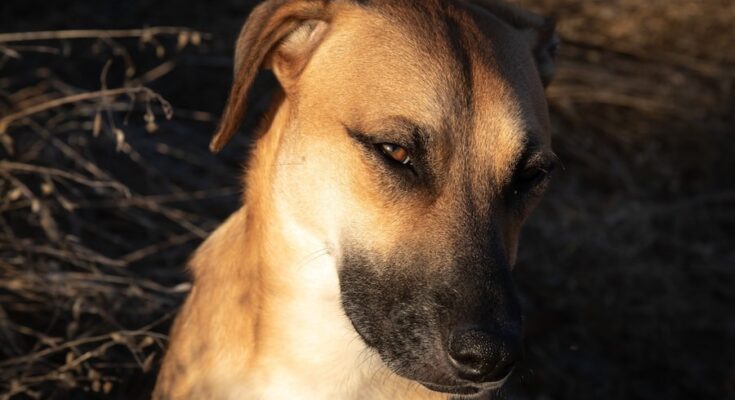Have you ever seen your dog look at you from across the room like they’re looking disapproving at you? And it’s known as the ‘dog side eye,’ something that’s so popular you might have seen it floating around online. The side eye in dogs, however, actually gives us a lot of information about the emotions and boundaries of the dog. In this article, we’ll explore what causes the dog side eye, what it means, and how to react in a way that won’t make things worse.
What is the “Dog Side Eye”?
Defining the Dog Side Eye
A ‘dog side eye’ is a way of saying how some dogs look, turning their tongues slightly away from them but keeping their eyes straight ahead. They are as though turning a sidelong glance of meaning. All of which can be interpreted with this look — from a light curiosity and caution to annoyance and even discomfort.
The Expression in Your Dog side eye
The side eye is not every sideways glance. It’s usually a pronounced, almost exaggerated look, and it’s usually accompanied by a stiff posture or other signs of hesitancy. This look is subtle but important to communicate to you if you see it, indicating how your dog is feeling.
Why Teenagers Even Think To Give the Side Eye.
Discomfort and Uncertainty
Dogs side eye because they’re uncomfortable or unsure about their surroundings. They might feel something unpredictable or intrusive about something that’s going around them, like sudden movement, loud sounds, or objects that they don’t know how to react to.
Social Situations That Will Make You Get The Side Eye.
Dogs are naturally alert and observant creatures, especially in social situations with dogs that they aren’t quite sure of. In crowded parks, new homes or when meeting new people or pets, they may give you the side eye. It’s an expression for dogs to continue to keep an eye on what’s going on even while subtly distancing themselves.
Anxiety or Nervousness
Anxiety is another trigger for the dog side eye. These are some body language cues that dogs can use to signal to you when they’re feeling anxious, with the side eye being a main one. Your dog may be showing off side eye, if in a setting that they find stressful, if they need a sense of safety.
Body Language As A Way To Recognize Anxiety
Anxious dogs also typically have sagging ears, flattened ears, and tuck tails along with the side eye. If you see all these signs together, it’s a surefire sign that your dog is anxious.
Protective Instinctual and Boundaries
Dogs are a territorial animal and once they feel their area has been invaded, they take action to protect it. As a warning sign, if they think that someone has crossed their boundary they may give them side eye. Such as when you approach a dog who is settling into their bed and they might give you a side eye, meaning that you’re doing something wrong.
Why Your Dog Feels Their Space Has Been Invaded
But sometimes a dog will give you the side eye because they feel their ‘personal bubble’ is at risk. It can happen if, for example, a child reaches out to touch them suddenly or another dog approaches them while they’re resting. They’re phrases that say, “I need just a little more space here.”
Is the Dog Side Eye a Sign of Aggression?
Body Language aside from the Side Eye
The side eye is a way of telling someone to back off or to warn someone without directly threatening them. In other words, more often it’s a way to give someone the silent treatment, or give a subtle hint to disengage. But if the side eying is accompanied by other indicators, like growling, lip curling, stiffening, it may mean the dog is just more stressed, or may be preparing to fight, if you corner him.
Reading Your Dog’s Mood and Behavior
However, as always, to interpret the side eye correctly, you need to look at the whole big picture (or your dog’s body language in this case). You can see what the side eye could be a result of and respond in a way that you can to the side eye.

What to Do About the Dog Side Eye
Gaining Respect and Respect Guidelines for Your Dog
Respecting your dog’s space is one of the best responses to a dog’s side eye. If they’re giving you that look, try back off a bit or change what you’re doing. In this case, it will help them feel safer and you show them that you’re observing their comfort level.
Comfort and Confident Positive Reinforcement
The more you encourage positive experiences in places that often get your dog’s side eye, the more your dog will learn that they don’t always have to feel anxious. Finally, as they gain confidence, can be built up using treats, gentle petting and calm reassurances, and decreased need to monitor you so closely.
Can You Teach a Dog Not To … Give the Side Eye?
Why Training the Side Eye Doesn’t Always Make Sense
There’s nothing to train the side eye out of when it’s used by normal dogs in normal communication. Instead, consider it your dog’s way of letting you know what they’re feeling. It is far more effective than discouraging this instinctual expression and fostering such a trusting relationship where they feel safe.
Positive Encouraging Tips
So by creating positive experiences around potential stressful situations, you extinguish the need to give the side eye! And when they’re calm and comfortable, they’re less likely to automatically think you’re an enemy, and so more likely to engage with you openly, rather than warily. To help your cat associate really calm behavior with treats and praise, reward calm behavior with treats and praise.
Conclusion
The dog side eye may or may not be funny, but it’s a very meaningful expression in your dog’s emotional toolbox. The side eye serves as a way of helping your dog tell you when they are nervous, feel uncertain, or just want some personal space. That understanding the causes while learning how to respond will then create a trusting and respectful relationship with your furry friend.
FAQs
Q1: Is side eye from a dog a bad thing?
Not necessarily. Dogs communicate discomfort or uncertainty with them, and no one does it better than the side eye. This is not aggression and they will not attack you, but it will mean they require more space, or feel uneasy about a situation.
Q2: If my dog gives me the side eye, how do I help my dog feel more comfortable?
Let them be, make small reassuring noises and don’t force interactions. But, with positive reinforcement, they’ll learn to feel more comfortable.
Q3: Can all dog breeds give the side eye?
Yes, any dog breed can give the side eye as it’s a universal form of canine body language. However, some breeds may be more expressive or prone to using this look depending on their personality.
Q4: Should I worry if my dog gives me the side eye frequently?
Frequent side eye can indicate that your dog often feels uncomfortable or uncertain. Try observing the context to understand what may be causing it, and consider ways to help them feel more secure.
Q5: Is it possible to train a dog not to give the side eye?
While you can reduce the frequency by helping them feel more comfortable, the side eye is a natural behavior and doesn’t need to be trained out. Focus on building trust and responding calmly to their signals.



